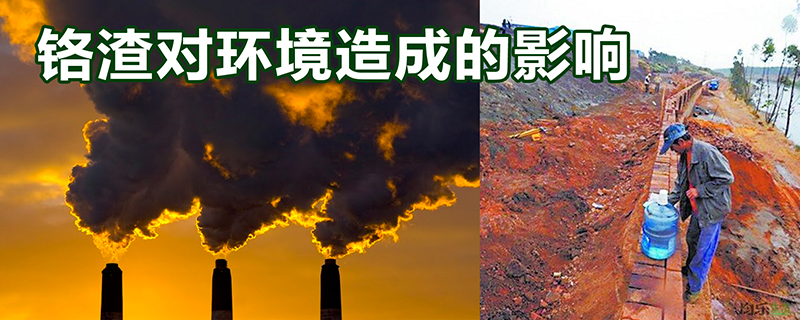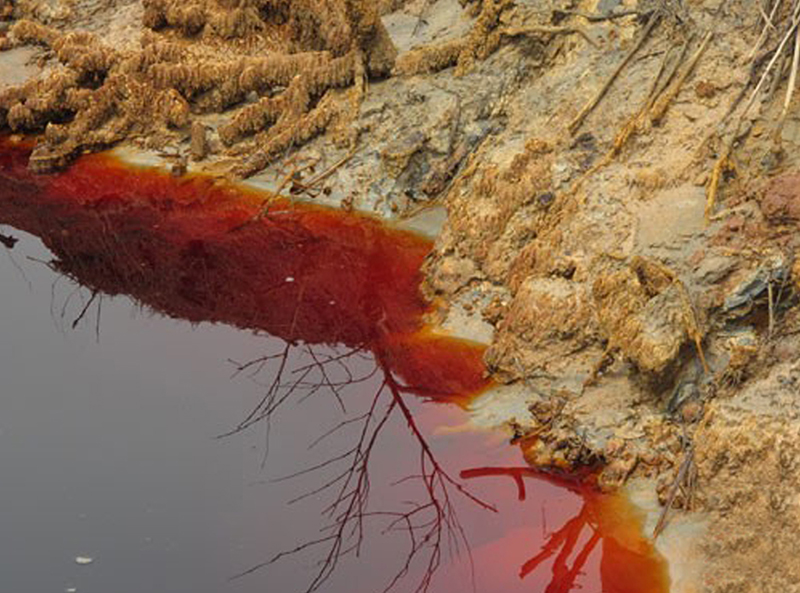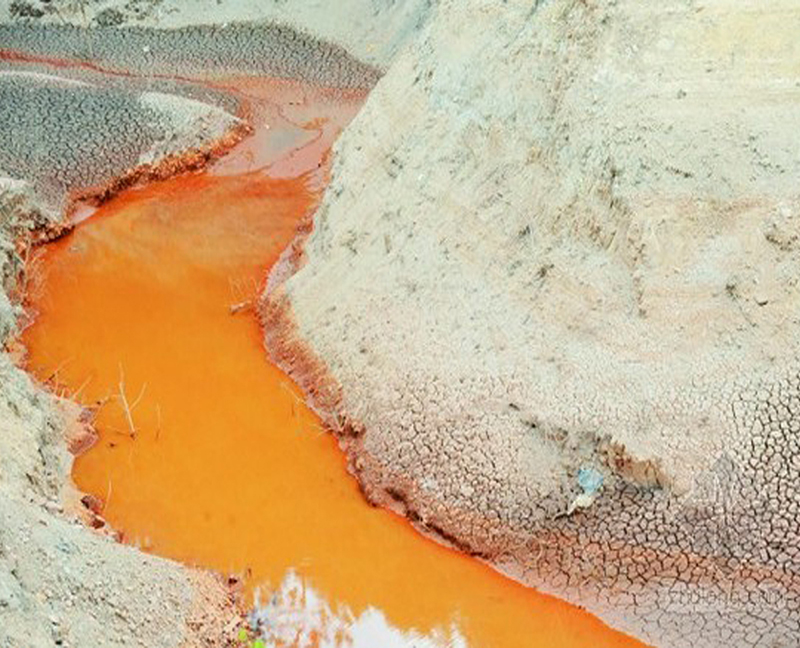It looks like you’ve provided a link and a date for an article or piece of content from the Dahe Network. If you need specific information or a summary from that source, please let me know!
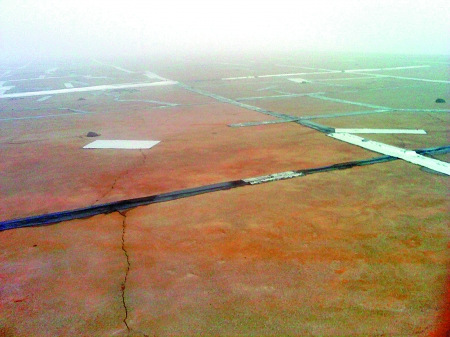
The top of the 'fortress' is covered with 'patches' to prevent liquid overflow.
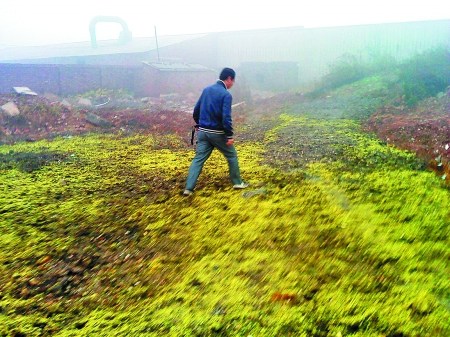
The large areas of yellow substances near the Yima chrome slag site are quite striking; this is the highly toxic substance "hexavalent chromium" produced when chrome slag encounters water. In the distance is the dam of the "chrome slag fortress."
□ Reporter He Hui, Text and Photos
On the surface, chrome slag, an industrial waste, seems similar to coal slag and should have little to do with our daily lives. However, it is undeniably toxic and has been secretly hidden around our cities for decades, gradually eroding farmland and groundwater.
From the 1950s to the 1990s, the construction of several chemical enterprises brought significant profits but also left behind over 6 million tons of waste chrome slag, piled up in the vicinity of more than 20 cities. The chrome slag contains carcinogenic calcium chromate and highly toxic hexavalent chromium. Most of these slag piles lack measures to prevent rain or seepage, and after decades of rainwater erosion and penetration, they are becoming a persistent source of pollution damaging underground water and farmland. In our province alone, there are six such "toxic tumors," totaling over 500,000 tons.
Why did these "tumors" arise, and why have they silently existed for decades?
Silent "Toxic Fortresses" for Decades
[The six chrome slag piles are located in Gongyi, Huaxian, Xinxiang, Kaifeng, Yima, and Xinmi, totaling 520,000 tons.]
Chrome pollution incidents are not uncommon worldwide, especially notable in the 1970s when Japan and the United States experienced severe chrome pollution events. The 1993 chrome pollution case in California became famous and was adapted into the film "A Civil Action." The movie tells the story of a female lawyer who accidentally discovered that the largest gas and electric company in America was illegally discharging toxic wastewater containing hexavalent chromium, which she believed could be the cause of fatal diseases in local residents. With unimaginable determination, she helped the residents win a massive compensation of $333 million.
In fact, the plot of the movie is not far from our reality. Right around our cities, there are "ownerless" massive chrome slag piles left behind by some enterprises, quietly hidden for decades.
Not far from the Zhengxi High-speed Railway Gongyi section, you can reach Wogou in Beisi Village, Huiguo Town, Gongyi City, where there is a huge "fortress" with a volume of 31,647 cubic meters. Looking up from the side of the "fortress," the stone-built dam rises up to 10 meters high.
Villagers near Huiguo Town, especially in Beiluo and Qingxi, all know that this "fortress," located only 3 kilometers from the Yiluo River, stores more than 50,000 tons of chrome slag. This "chrome slag fortress" has been here for 20 years, starting from 1990.
The chrome slag pile was not originally located here; it had been stored outdoors in the yard of a local chemical plant, but due to repeated public dissatisfaction, it was relocated in 1990.
On October 12, Wu Jiwei, the head of the Hazardous Waste Disposal Department of the Gongyi Environmental Protection Bureau, said that the chrome slag stored in Huiguo Town is referred to by locals as "Old No. 2," stemming from the second chemical plant in Huiguo Town, which produced chromium waste during its operations.
"Old No. 2" was established in April 1976 and primarily produced chromium anhydride. At that time, the business was thriving and was a backbone enterprise for Huiguo Town and the entire Gongyi City, contributing significantly to tax revenue.
However, the production of chromium anhydride generates a large amount of chromium waste. "At that time, environmental awareness was low, and there was insufficient understanding of the dangers of chrome slag. It was carelessly piled up, leading to pollution of the underground water in villages like Beiluo and Qingxi. During the rainy season, the leachate from the chrome slag mixed with rainwater entered the Yiluo River, severely polluting surface water..."
In earlier years, farmers in Huiguo Town did not eat the vegetables and grains they grew; instead, they sold them elsewhere. Sometimes, the land was nearly barren, and the fish in the water struggled to survive. Local villagers suffered from various mysterious illnesses with no identifiable source. The villagers attributed these issues to chrome slag pollution, leading to ongoing disputes with the factories.
In 1990, under pressure, "Old No. 2" constructed a chrome slag storage site by acquiring six acres of land in Wogou, Beisi Village, southern Huiguo Town. Although the storage site had a hardened base, a slag dam built around it, and was covered with a 50-centimeter thick layer of gray soil, the new chrome slag continuously produced by the factory still threatened the surrounding environment.
In 1992, "Old No. 2" was forcibly shut down. Since then, the chrome slag has been sealed in Wogou.
Investigations by the Provincial Environmental Protection Bureau revealed that there are five other chrome slag piles in the province similar to the one in Huiguo Town, located in Sijianfang Township of Huaxian, Dakuai Town of Fengquan District in Xinxiang, Longting District of Kaifeng, Yima City in Sanmenxia, and Daqi Town in Xinmi City, Zhengzhou.
The six chrome slag piles total 520,000 tons, with the smallest one in Xinxiang containing 28,400 tons and the largest one in Yima City holding 325,000 tons, which accounts for 67% of the total chrome slag in the province.
No Effective Treatment for Chromium Poisoning
【“Once these pollutants enter the water or soil, they are difficult to remove and may affect several generations.”】
What exactly is chrome slag? What are its dangers?
Shao Fengshou, director of the Solid Waste Management Center of the Henan Provincial Environmental Protection Bureau, explained to reporters that chromium is a silvery-white, hard metal, slightly lighter than iron, and exists in trivalent and hexavalent compounds. All chromium compounds are toxic, with hexavalent chromium being the most toxic. Chrome slag is an industrial waste generated during the production of metallic chromium and chromium salts, and it is a highly toxic hazardous waste.
Due to specific requirements in the production process, as long as the chromium is not converted into a fixed, insoluble form, it remains as ionic chromium, which dissolves in water and quickly turns into highly toxic hexavalent chromium.
“If the soil and water are rich in hexavalent chromium, it can be easily absorbed by living organisms. If the historically accumulated chrome slag is not effectively disposed of, it poses a severe safety hazard to the entire ecosystem,” said Shao Fengshou.
On October 18, during a visit to the Henan Provincial Occupational Disease Prevention Institute, the reporters learned that chromium poisoning refers to when the levels of chromium in the blood and urine exceed normal standards. Workers engaged in chemical and electroplating industries are prone to chromium poisoning, as hexavalent chromium can be easily absorbed by the body and accumulate within.
A physician specializing in toxicity research stated that industrial exposure to chromium and its compounds primarily occurs through dust and fumes from chromium ores and smelting processes. Clinically, chromium and its compounds mainly harm the skin and respiratory system, leading to dermatitis, ulcers, rhinitis, nasal septum perforation, and pharyngitis. Prolonged exposure can also severely damage the digestive system, resulting in gastrointestinal ulcers and a decrease or loss of taste and smell. “However, there is currently no effective treatment for acute or chronic chromium poisoning; generally, symptomatic treatment for metal poisoning is administered. Chromium is carcinogenic, primarily affecting the lungs, followed by the liver and kidneys.”
Subsequently, the reporter contacted the Occupational Health and Poison Control Institute of the Chinese Center for Disease Control and Prevention. A researcher informed the reporter that hexavalent chromium primarily poses chronic toxicity, entering the body through the digestive tract, respiratory tract, skin, and mucous membranes, and accumulating mainly in the liver, kidneys, and endocrine glands. When humans and animals consume water containing hexavalent chromium, it is absorbed by cells in many tissues and organs. The lethal dose for humans is 5 grams. However, the researcher also noted that chromium is an essential trace element for the human body, with a normal daily intake range of 0.05 micrograms. Nearsightedness and diabetes are linked to chromium deficiency.
Data from the National Environmental Protection Ministry indicates that the main heavy metal pollutant in China's surface water is mercury, followed by cadmium, chromium, and lead. Currently, nearly 20 million hectares of farmland in China are contaminated by heavy metals such as cadmium, arsenic, chromium, and lead, accounting for about one-fifth of the total arable land area. Each year, heavy metal pollution results in a reduction of over 10 million tons of grain production nationwide.
Zhao Qiguo, an academician at the Chinese Academy of Sciences who has spent a lifetime dealing with soil, stated, “Pollutants from metallurgy and chemical industries have long seeped into the soil. Some chemical substances remain in the soil for even 30 years after leaching in. Once these pollutants enter water or soil, they are difficult to remove and may impact several generations. Chemical substances in the soil enter the food chain, ultimately being consumed by humans.”
During the interviews, reporters learned that in 2005, the State Council issued a notice requiring that all historically accumulated chrome slag be harmlessly disposed of by the end of the "Eleventh Five-Year Plan," meaning that this year-end is the deadline for disposal.
Case Study Two
Chromium Residue Pollution Incident in Qujing
Authors: Shangguan Lanxue, Intern Yang Taiyu
At the chromium residue disposal site in the Luxi Chemical Factory area, workers are covering the surface of more than 100,000 tons of chromium residue with asbestos tiles, building piles, and reinforcing walls. Who are they trying to fool with such last-minute efforts?
Recently, the illegal dumping of chromium residue in Qujing, Yunnan, which contaminated water sources, has drawn strong public attention. On August 12, Yunnan Information News first reported on the pollution suffered by villagers in Yuxi Town, Qilin District, and various rumors went viral online.
On August 15, the Qujing Municipal Government's website published details on how the incident was handled. According to the official report, on the morning of June 12, residents of Wanzi Village in Zhangjiaying Village Committee of Sanbao Town reported that some of their free-range goats had died, which was confirmed to be due to poisoning by local animal husbandry and environmental protection agencies.
Investigations revealed that the industrial chromium residue from Yunnan Luxi Chemical Industry Co., Ltd. (hereafter "Luxi Chemical") had been illegally dumped on a mountain in Qilin District. The long-term accumulation of this residue and rainwater runoff led to contamination of nearby water sources and soil. The goats that the villagers raised died after drinking the contaminated water.
After the poisoning incident, local authorities conducted a cleanup of the industrial waste chromium residue dumped in Qilin District. Over 5,000 tons of chromium residue and 9,130 tons of contaminated soil were returned to Luxi Chemical's designated disposal site, and the polluted standing water was treated to eliminate harm. Currently, no excessive hexavalent chromium has been detected in the Nanpan River.
Investigation Findings
The official investigation results revealed that since April 2011, two drivers from Xinyi Sanli Company, Wu Xinghuai (formerly known as Zhang Xinghuai) and Liu Xingshui, had dumped chromium residue multiple times in Sanbao Town, Ciying Township, and Yuezou Town to save on transport costs. They made over 140 trips, with a total of 5,222.38 tons of chromium residue dumped, including one truck in Ciying Township, 40 trucks in Sanbao Town, and over 100 trucks in Yuezou Town.
As of now, all chromium residue and contaminated soil have been returned to Luxi Chemical's disposal site, and environmental protection personnel have treated 40,000 cubic meters of water in Chachong Reservoir and nearly 3,000 cubic meters of collected water for decontamination. The water quality was deemed safe for discharge.
However, through the lens of CCTV's News 1+1, a different reality is revealed. At Luxi Chemical's disposal site, the chromium residue is left exposed outdoors with no cover, just a wall away from the source of the Pearl River, the Nanpan River, where garbage floats and a foul smell fills the air. Due to strong social concerns, workers are covering the chromium residue with asbestos tiles, erecting piles, and reinforcing the walls. Reports indicate that the uncovered chromium residue has been left outdoors for over 20 years, with more than 100,000 tons still untreated.
According to the Comprehensive Remediation Plan for Chromium Residue issued by the National Environmental Protection Administration in 2005, all stored chromium residue should have been safely disposed of by the end of 2010 to completely eliminate the environmental threat. So why is Luxi Chemical still storing such a massive amount of chromium residue?
In a phone interview, Mr. Deng, director of the Qujing Municipal Publicity Office, explained that the chromium residue stored by Luxi Chemical is a historical legacy issue. After the national remediation plan was implemented, the company’s harmless treatment facilities had inadequate capacity, processing only about 20,000 tons per year, resulting in only a few tons being processed from the historically accumulated 280,000 tons of chromium residue.
Multiple Identities?
According to the Yunnan Provincial Administration for Industry and Commerce, Luxi Chemical Industry Co., Ltd. was established in 1994, commencing operations in 2003 with a registered capital of 82.58 million yuan. The company's main business includes the manufacture and sale of sodium chromate, potassium dichromate, and ammonium chromate, among other products.
Additionally, Xu Jiangen, as the legal representative, also heads another company, Yunnan Luxi Peace Technology Co., Ltd., established in 2003 with a registered capital of 60 million yuan, focusing on the production and sale of leather tanning agents, leather greasers, and chromate deep processing.
In the News 1+1 program, the event's key player was referred to as Luxi Peace Chemical Company. However, no related information was found in the Yunnan Provincial Administration for Industry and Commerce, though a trace of it appeared on the China Feed Industry Information website, claiming to be "one of the largest chromium salt chemical production enterprises in Asia," with contact details for Tang Zaiyang.
According to reports from Daily Economic News, Tang Zaiyang, the current general manager and former legal representative of Peace Technology, stated that Peace Technology and Luxi Chemical are essentially two brands operated by the same team—one focused on production and the other on sales. The director of the Luxi County Economic and Information Bureau, Li Mingfu, indicated that Peace Technology originated from the collective-owned Luxi Chemical Plant, and around 2005, investment attraction brought in Peace Chemical, leading to a stock transaction that formed the current Luxi Peace Technology.
In the Guizhou Administration for Industry and Commerce, no information about Xinyi Sanli Company was found.
According to the official report from the Qujing government, Luxi Chemical Industry Co., Ltd. signed a harmless treatment agreement with Xinyi Sanli Company, but specific details of the agreement and associated responsibilities were not disclosed.
It is reported that experts from the Pearl River Water Resources Commission under the Ministry of Water Resources have conducted investigations at the incident site, but the results have not been made public yet. Meanwhile, the Qujing Municipal Government has ordered Luxi Chemical to cease operations for rectification. However, the environmental damage caused by economic interests is difficult to predict and repair in a short time; sustainable development should not merely be a slogan.

